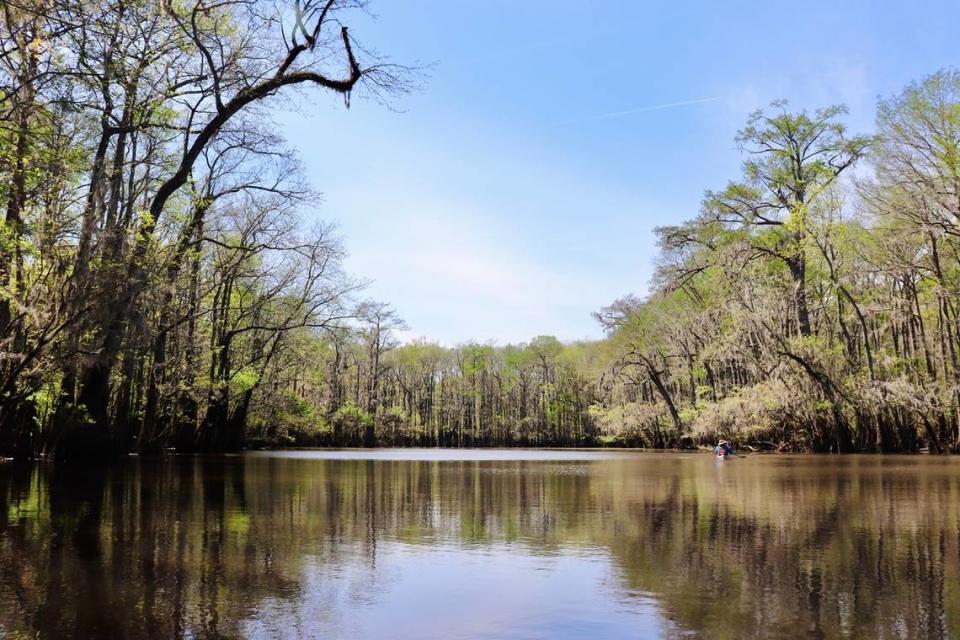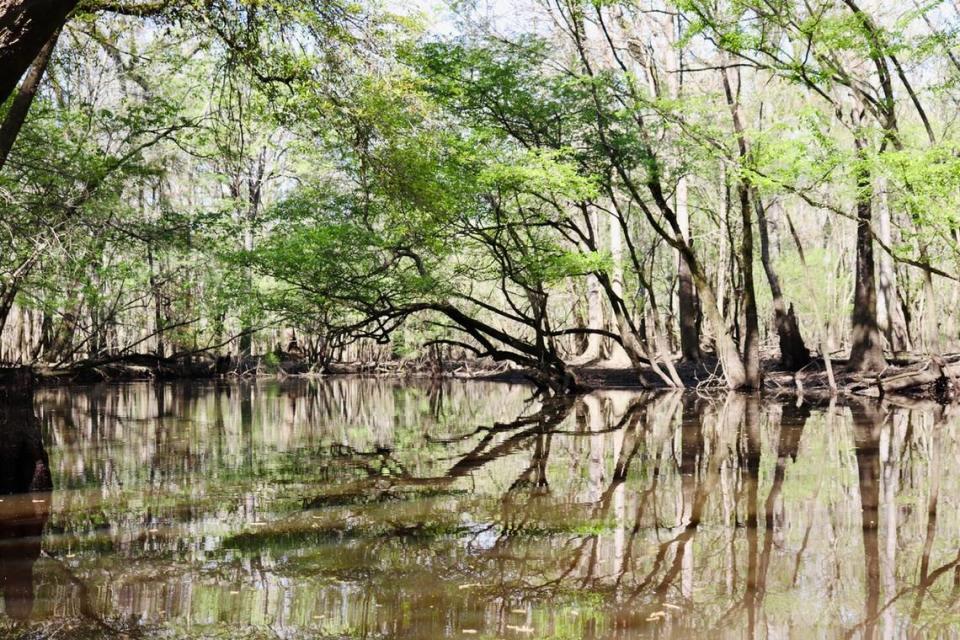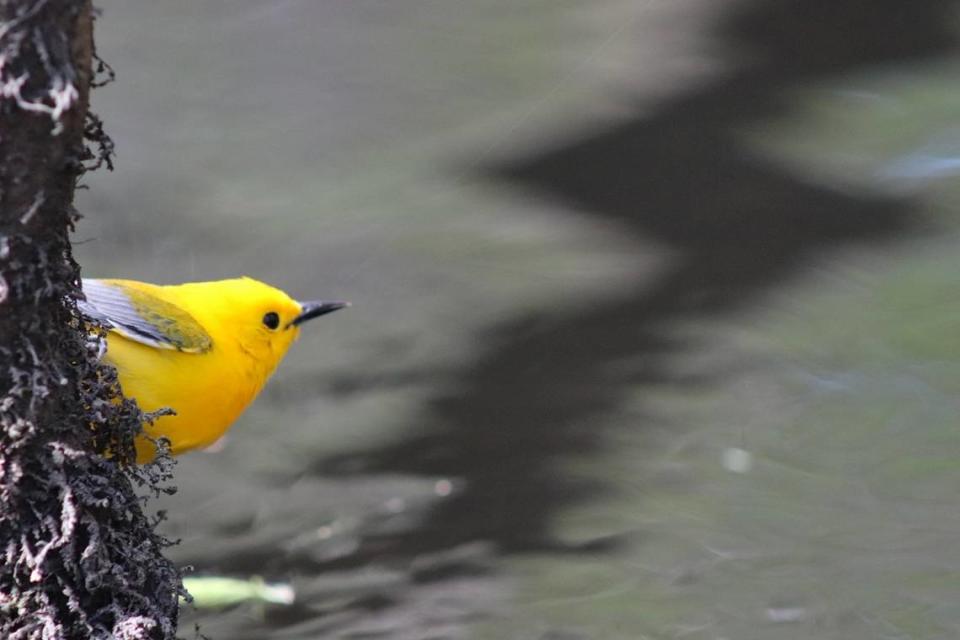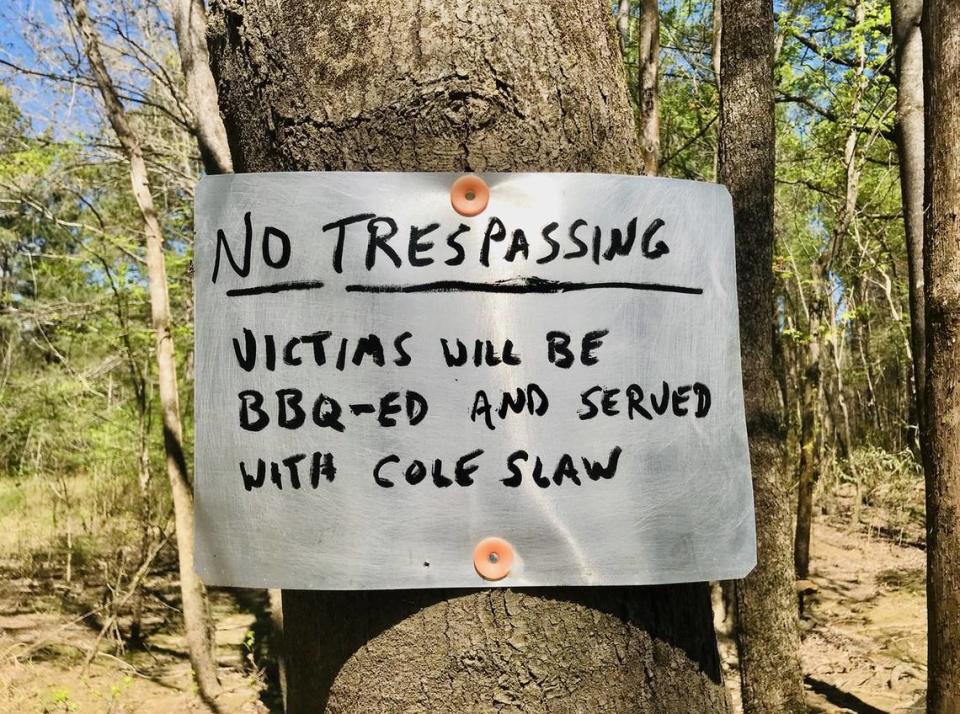Explore one of the Lowcountry’s most scenic areas with a kayak trip on Bates Old River
I have seen a lot of warning signs in my day, but this one was oddly specific: NO TRESPASSING, VICTIMS WILL BE BBQ-ED AND SERVED WITH COLE SLAW.
One part of me was a little terrified, but on the other hand, I could not help but admire the property owner’s choice of sides. Cole slaw goes perfectly with Carolina barbecue. I wondered if banana pudding would be the dessert of choice.
We did not stick around to find out. We were deep in the swamps of the Congaree River exploring a passage called Bates Old River and decided that discretion was the better part of valor on this Lowcountry springtime afternoon.
Bates Old River is two hours from the Beaufort County area and offers a day of adventure for anyone seeking to get on the water and explore one of the most scenic areas of the Lowcountry.
Bates Old River was once the main channel of the Congaree River until a flood in 1852 changed the river’s course. This event cut off several miles of river, forming an oxbow that soon began to fill in with mud and become overgrown with the vast swampy forest. Sighted in in the fork of the Congaree and Wateree rivers, the area became known as “fork swamp” on maps.

In this swampy reach, the river channel became a series of shallow lakes, stretching like brown pearls along a thin necklace of creeks, the largest of these stretching three miles long and connecting to nearby Congaree River.
Located in this region were several plantations and the historic McCord’s Ferry, where Gen. Nathaniel Greene rendezvoused with Gen. Francis Marion, the “Swamp Fox,” after Marion’s victory at nearby Fort Motte. The area of Bates Old River has been an important crossroads throughout history, and has been a vital link between the Lowcountry and the backcountry region of South Carolina since before colonial times.
Bates Old River is part of a recently acquired tract of Congaree National Park. This 26,000 acres of federally-preserved land is home to numerous “champion” trees, the tallest known examples of at least 15 different species. Thousands of visitors come from around the world every year to explore the national monument, walk its boardwalks and hike its trails.
Bates Old River, sometimes referred to unofficially as “Congaree Park East,” offers a much more unique and quiet adventure. Unlike the main park, the forests of Bates Old River were logged in more recent times and do not contain the old growth forest. When you visit Bates Old River, you will visit a sunnier world with smaller trees, but the experience will be no less breathtaking.
You can access Bates Old River and the eastern section of Congaree National Park from U.S. 601. For hiking, the Bates Ferry Trailhead, and the Fork Swamp Trailhead offer views of this section for those using foot travel.
To access Bates Old River and the swampy network of creeks and lakes of the old channel, you can put in at an unimproved boat landing. From there you can paddle along the three-mile stretch of open water formed by the hook-shaped oxbow lake of the old river. Alligators cruise the waters and stalk beneath an ibis rookery. You will pass the remains of an old trestle and the further you go, the more remote it will seem.

Once you get to the Congaree, a wide sandbar just upstream offers an excellent picnic spot. For a more swampy excursion, head upstream from the landing along Running Creek. There, your path will take you through flooded forest of buttressed cypress and tupelo trees. Small lakes and ponds form sunny oasis, where bass and redbreast bream make good fishing, and wildlife abounds.
Woodpeckers and owls can be seen in the canopy, a great blue heron rookery can be heard, and songbirds like the brilliant yellow prothonotary warbler dart among the tree trunks and cypress knees looking for bugs. It is an unforgettable passage.

Recently, I kayaked Bates Old River along Running Creek with a group of friends. The early spring swamp was alive with color and birdsong. The water level was down a little but this made navigation very easy. We kayaked a little over five miles until we saw the aforementioned sign and its promise of barbecue. We shared a laugh at the humor, but kept our distance–just in case.
Bates Old River is a great outdoor destination for adventurers of multiple skill level. Whether you are kayaking, fishing, or doing a little hiking along the trail, this promises a beautiful day experiencing nature and a unique habitat.
Just avoid the cole slaw.

Getting there
Bates Old River is located off U.S. 601, just across the Congaree River in Richland County. It is 2 hours from the Beaufort County area and easy to reach. Take I-95 north for 68 miles to Exit 97, U.S. 301. Go 2.7 miles and turn right onto S.C. 267. Take 267 north to U.S. 601. Take a right onto 601 for approximately 4.5 miles. Once across the river, the boat landing will be on your right. The drive to the boat landing is unimproved and may have washouts, so drive carefully. Access to the hiking trails is by gravel drive. Bates Old River is unmarked and so, in high water, you may need a GPS and accurate maps. The creek channel is fairly clear, however, and as this is an out and back paddling destination, it is easy to double back to the landmark of the 601 bridge. For more info on Bates Old River and Congaree National Park, including water levels and park conditions, call 803-776-4396 or visit https://www.nps.gov/cong/index.htm.

